Benchmarks
Essentially, the 12900K doesn’t really overclock all that much on any motherboard we’ve tried thus far. When the power limits are removed, these CPUs will report a maximum power limit of 4095w. That’s how both are configured. It’s not unlike running with PBO enabled on an AMD CPU otherwise we have both CPUs set up for stock operation, but they can boost clocks freely.
Sandra Dhrystone
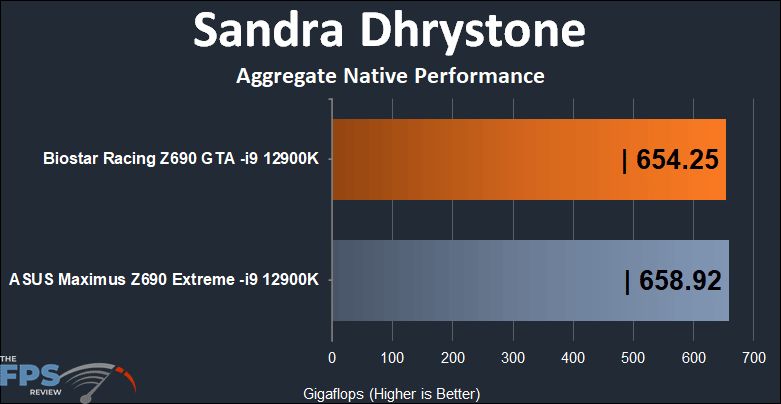
In this test, we see virtually identical results when comparing the ASUS Maximus Z690 Extreme and the BIOSTAR Racing Z690 GTA. While the latter was slightly faster, it was only faster by what you might consider a margin of error despite being a DDR5 board and ASUS’ most expensive offering next to the Glacial version with a full monoblock.
Sandra Whetstone

In this test we see a much larger difference between the two test systems, favoring the ASUS Maximus Z690 Extreme. I am unsure of the difference, but the latter does have a slight thermal advantage being under custom water, even though the water block used is less than ideal. As you’ll see from subsequent benchmarks, that advantage rarely materializes.
wPrime
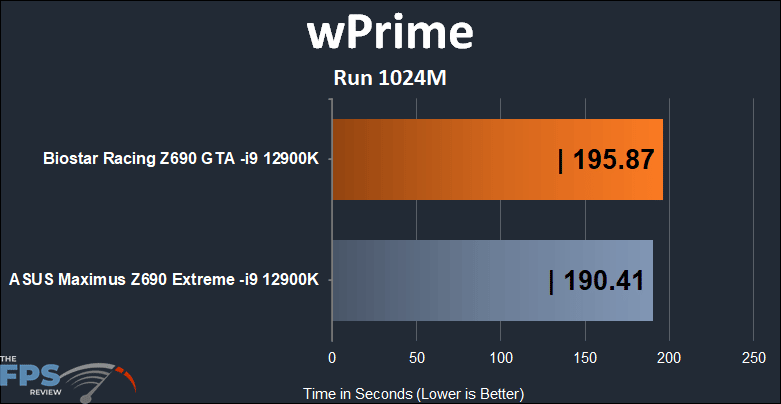
In the wPrime test, there isn’t much of a difference between the two test systems. In this case, the result favors the DDR4-based BIOSTAR offering.
POV-Ray v3.7
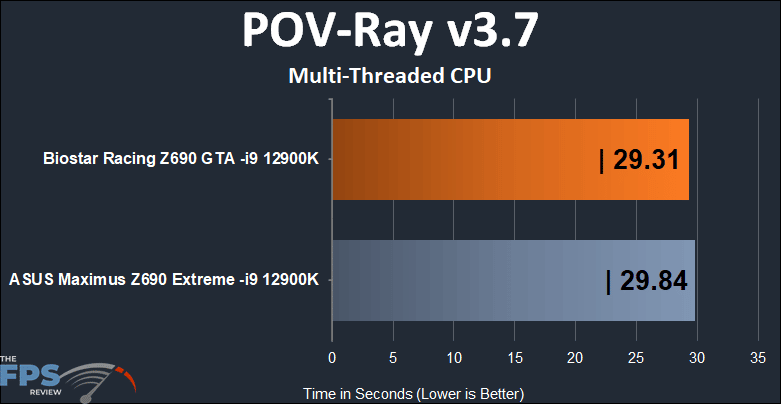
Once again, the results are extremely close between these two test platforms. Again, the DDR4-based BIOSTAR does slightly better but again is within a margin of error. Functionally, these results are identical.
V-Ray

In our V-Ray benchmark, we see the ASUS Maximus Z690 Extreme pull ahead of the BIOSTAR by a small margin. Again, we see no real difference between the two test platforms despite the massive cost difference.
Cinebench R23 – Single Thread
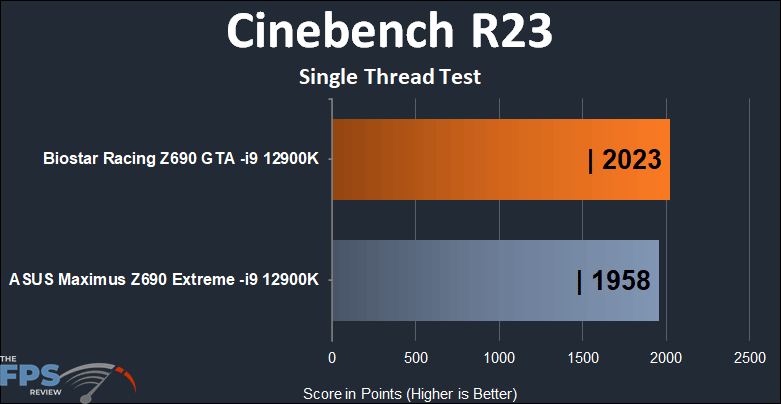
In the Cinebench R23 single thread test we see very close results between our two test systems. Again, our DDR4-based BIOSTAR system actually scores better (slightly) than the nearly $1,100 ASUS ROG Maximus Z690 Extreme-based configuration.
Cinebench R23 Multithread
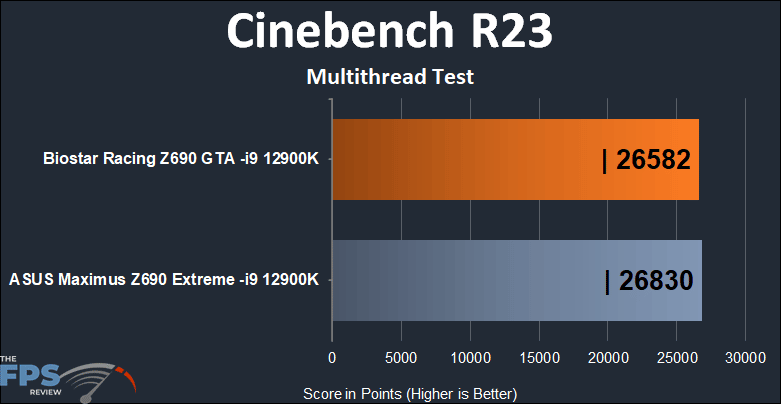
However, in the multithreaded Cinebench R23 test, we see a reversal with the ASUS board achieving a slightly higher score than the cheaper BIOSTAR offering.
Blender Pavilion

In our Blender test, we see results that are almost identical once again. While the ASUS board is faster here, it’s only by .3 minutes. This is not a huge difference, especially when considering the price points of the two platforms.
Blender Victor

In our second Blender test, we see the same thing we saw in the previous Blender test. The difference is slightly more pronounced here, but again its s a minimal difference when comparing the two systems.
